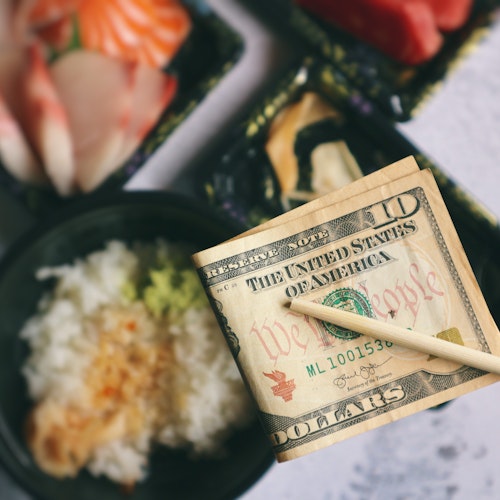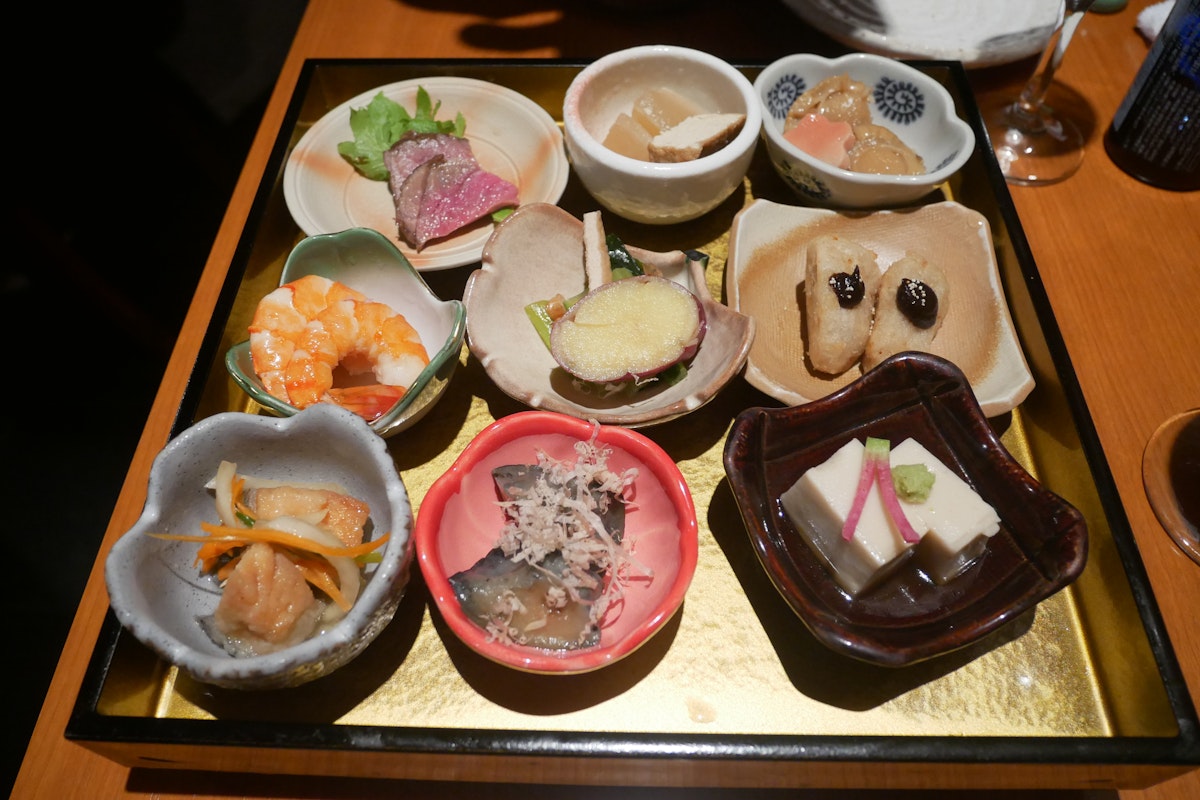
Kyoto, a city steeped in history and tradition, is not only Japan's former capital but also the heart of its rich culinary heritage. Often dubbed as the "Kitchen of Japan," Kyoto has been at the forefront of defining and refining Japanese cuisine for centuries. The city's location, surrounded by mountains on three sides and blessed with a diverse climate, allows for an abundance of fresh seafood, vegetables, and other seasonal ingredients, contributing to a unique food culture that is deeply rooted in nature and the changing seasons.
The essence of Kyoto's cuisine lies in its authenticity and the balance of flavors. Whether it's the elaborate kaiseki ryori, a multi-course meal that embodies the spirit of Japanese hospitality, or the humble yudofu (tofu hot pot), every dish is a testament to the city's rich gastronomic heritage. This guide aims to explore the depth and breadth of Kyoto's culinary landscape, highlighting its iconic dishes, cherished eateries, and food-centric traditions.
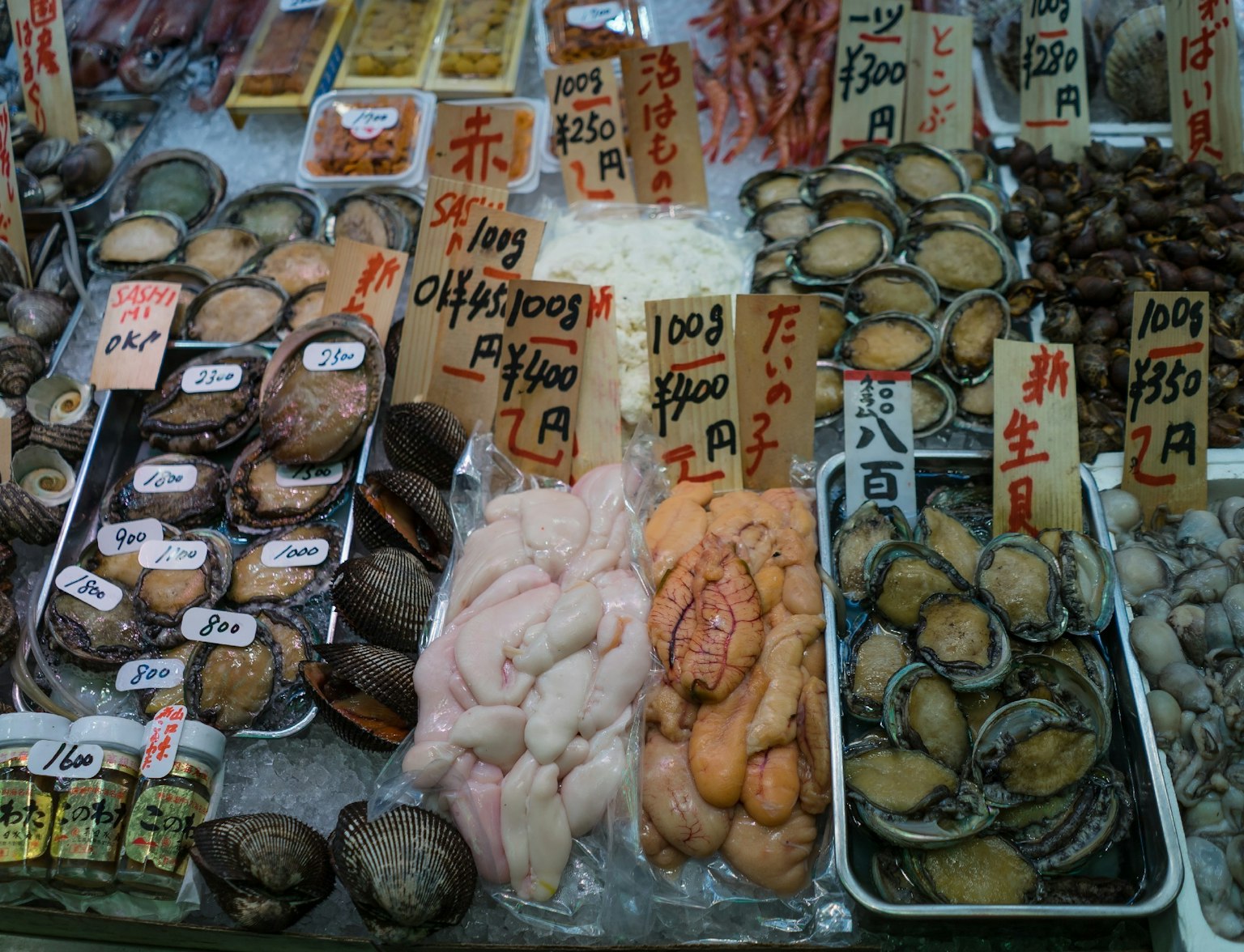
Discover the flavours of Kyoto with a guided walk through the historic Nishiki Market.
Kaiseki Ryori is the epitome of Japanese haute cuisine. It's a traditional multi-course meal that showcases the Japanese philosophy of "shun" - the celebration of seasonal ingredients at their peak. Rooted in the tea ceremony traditions, Kaiseki Ryori is as much a feast for the eyes as it is for the palate. Each course is meticulously crafted and presented to reflect the season, creating a harmonious blend of taste, texture, and aesthetics.
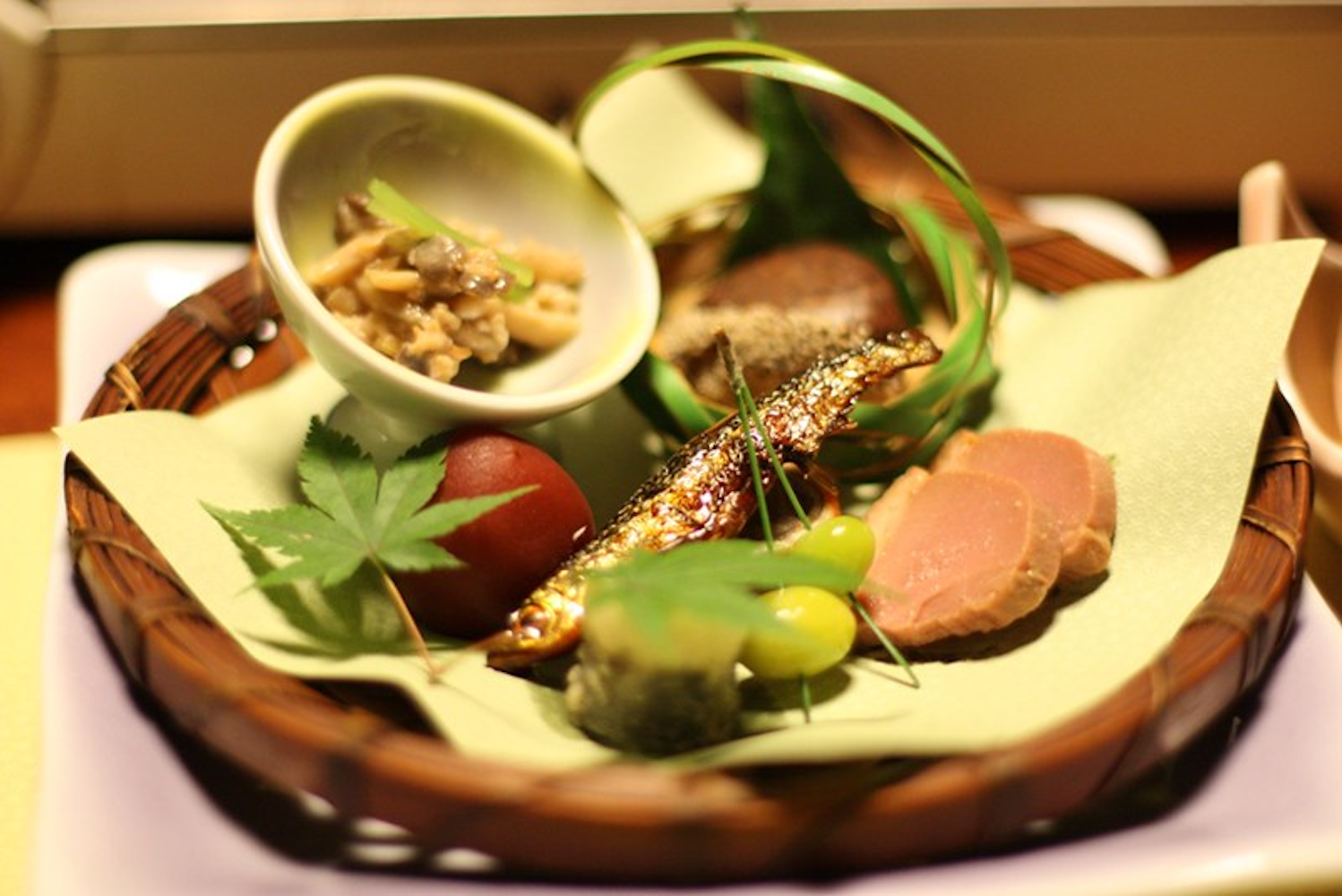
A typical Kaiseki meal might start with a small appetizer (sakizuke), followed by a seasonal dish (hassun), a simmered dish (nimono), a grilled dish (yakimono), and a steamed course (mushimono), among others. The meal concludes with a comforting bowl of rice, miso soup, and pickles (shokuji). But remember, the beauty of Kaiseki lies in its flexibility and the chef's creativity, so every Kaiseki meal can be a unique experience.
Tsuruya Yoshinobu: In Nakagyo Ward, this spot combines traditional Kaiseki with modern twists. Known for seasonal menus and serene atmosphere.
Kitcho Arashiyama: Located in scenic Arashiyama, Kitcho is famous for its service, seasonal cuisine, and garden views.
Kikunoi: A Michelin-starred restaurant in Higashiyama Ward, Kikunoi excels in every aspect of Kaiseki, from taste to presentation.
Gion Nanba: In the historic Gion district, this intimate restaurant is celebrated for its local ingredients and traditional flavors.
Hyotei: A 400-year-old establishment in Sakyo Ward, renowned for its breakfast Kaiseki and historic ambiance.
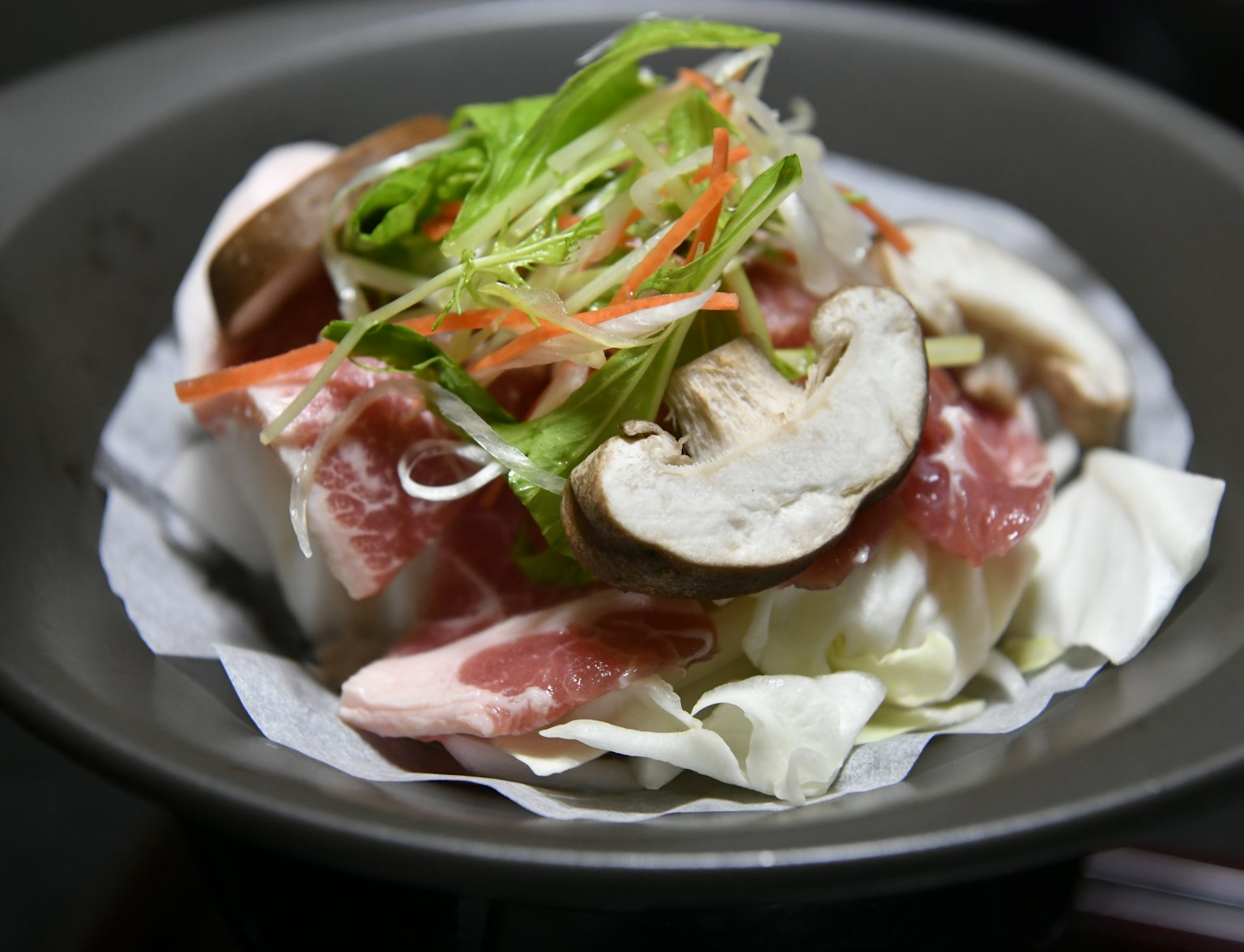
Enjoy a mouthwatering 10-course Kaiseki meal with green tea, dessert, and a drink.
Yudofu, a simple yet delectable dish, symbolizes the essence of Kyoto's cuisine. It's a comforting dish made by gently simmering tofu in a kelp-based broth until it becomes deliciously soft and flavorful. Despite its simplicity, Yudofu is a testament to the Japanese culinary philosophy of appreciating the inherent flavors of ingredients.
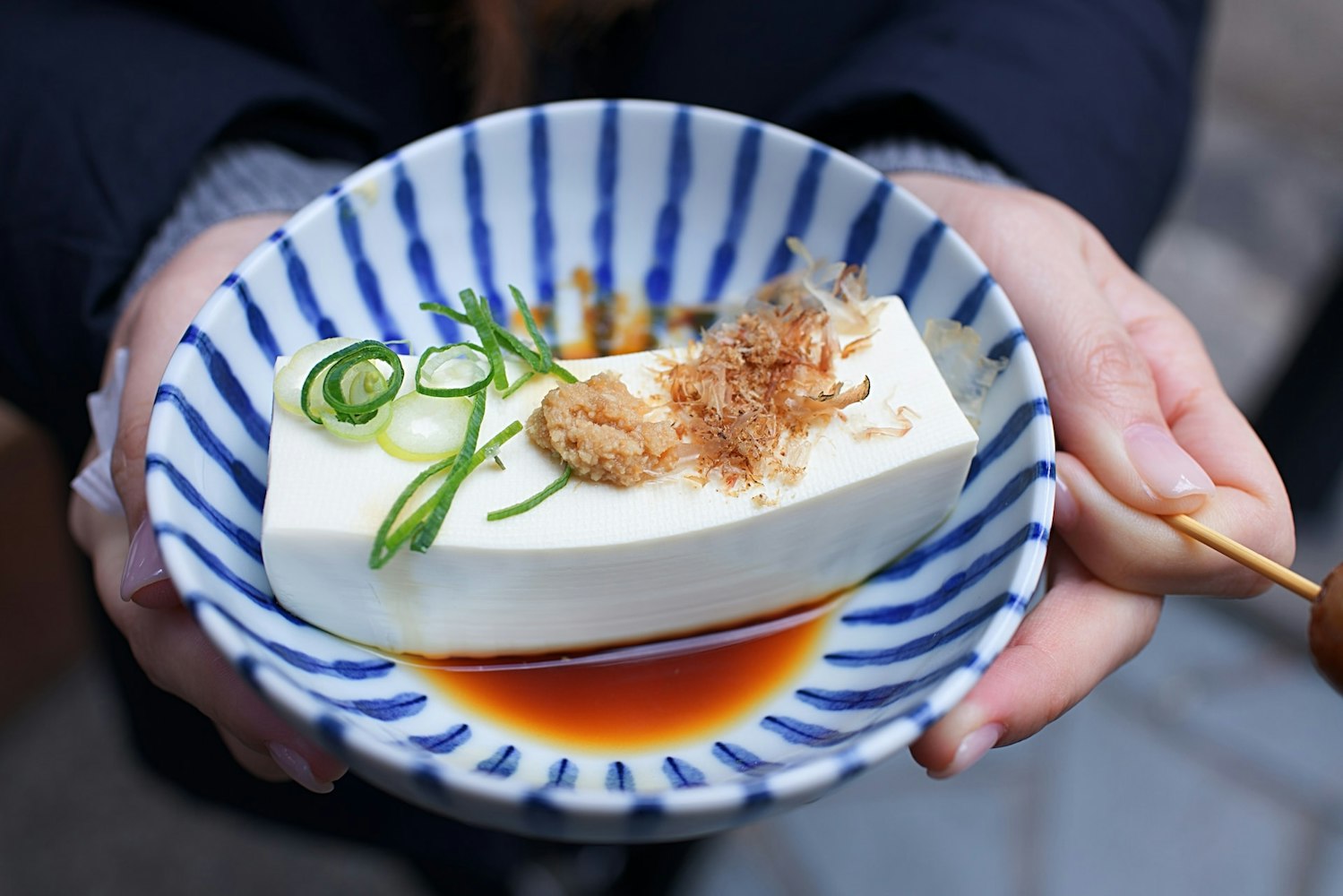
In Kyoto, Yudofu is often enjoyed in the colder months, providing warmth and nourishment. But its delicate flavor and lightness make it a wonderful dish to enjoy year-round. The tofu used in Yudofu is typically Kyoto-style tofu, known for its smooth texture and rich, creamy taste. This tofu is made from high-quality soybeans and the pristine water of Fushimi, a district in Kyoto famous for its sake production.
Nanzenji Junsei: Located near the Nanzenji temple, this restaurant is renowned for its Yudofu. Served in a traditional Japanese setting with views of a beautiful garden, the Yudofu here is a must-try.
Tousuiro: Specializing in tofu dishes, Tousuiro offers a Yudofu course meal that highlights the versatility of tofu. Their Yudofu, made with locally-sourced soybeans, is a standout.
Okutan: Established in 1638, Okutan is one of the oldest tofu restaurants in Kyoto. Their Yudofu, served in a serene, traditional environment, has been enjoyed by locals and tourists alike for centuries.
Yudofuya: Located in the Ryoanji Temple, Yudofuya offers a unique experience of enjoying Yudofu while overlooking the temple's famous rock garden.
Kyoto-style sushi, known as "Kyozushi," offers a unique take on the globally popular dish. Unlike the nigiri sushi most people are familiar with, Kyozushi is a form of pressed sushi. The fish and sushi rice are layered and pressed into a wooden mold before being cut into bite-sized pieces.
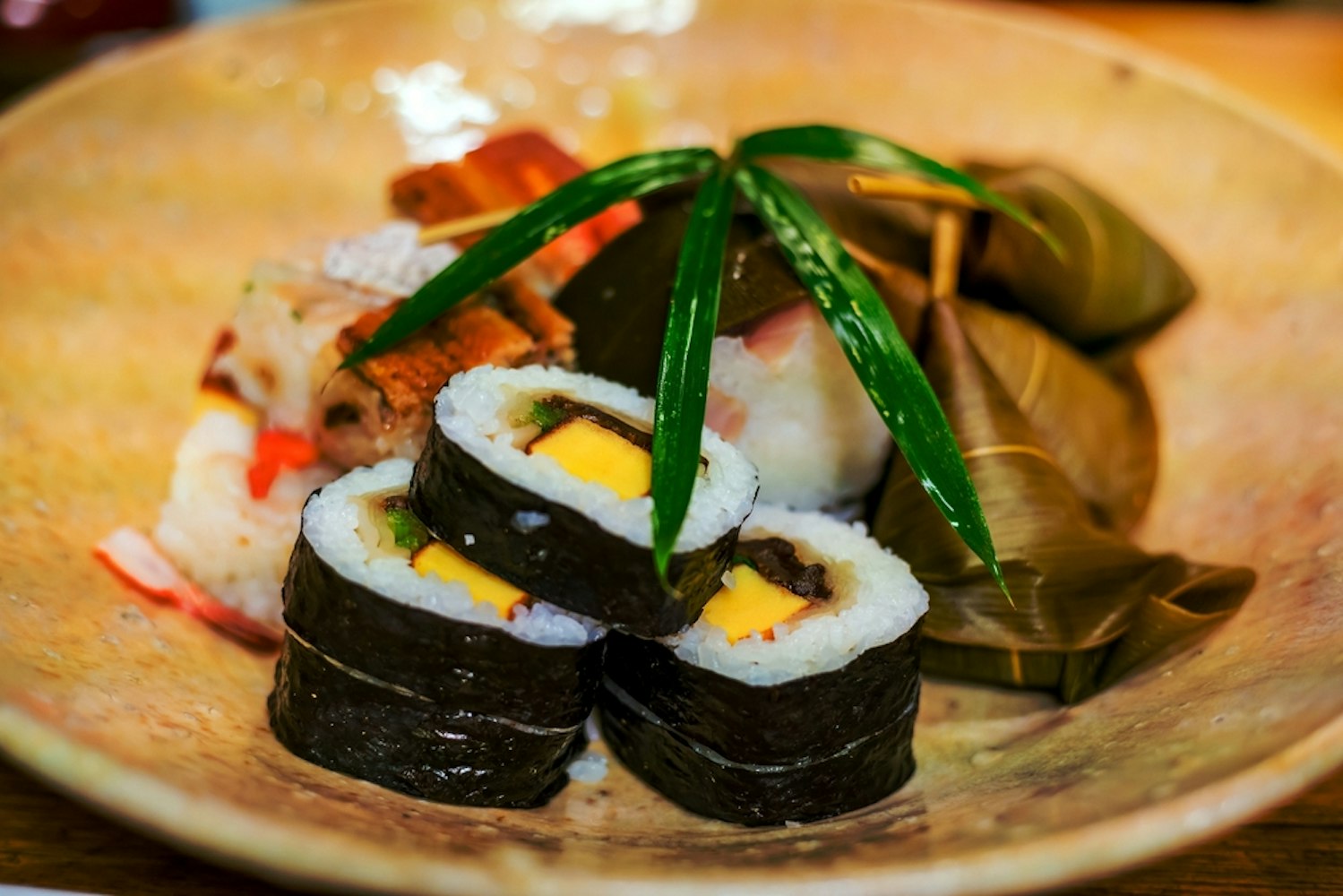
Kyozushi often features cured or cooked toppings instead of raw fish, owing to Kyoto's inland location. Mackerel and sea bream are commonly used, along with pickled gourd, egg, and shiitake mushrooms. The resulting flavor profile is subtly tangy and complex, providing a refreshing contrast to the rich, raw seafood found in other types of sushi.
Izuju: Known as the "master of Kyozushi," Izuju has been serving this traditional sushi style for over a century. Located near Yasaka Shrine, it's the perfect place to experience Kyoto-style sushi.
Matsudaya: This one-Michelin-starred restaurant offers an exquisite sushi dining experience. While they serve a variety of sushi styles, their Kyozushi is particularly notable.
Sushi Rakkyo: For an affordable yet quality Kyozushi experience, Sushi Rakkyo is a great choice. Their sushi set, which includes a variety of Kyozushi, is highly recommended.
Sushi Matsumoto: Another Michelin-starred restaurant, Sushi Matsumoto offers a blend of traditional and innovative sushi. Their Kyoto-style sushi, made with carefully selected ingredients, is simply outstanding.
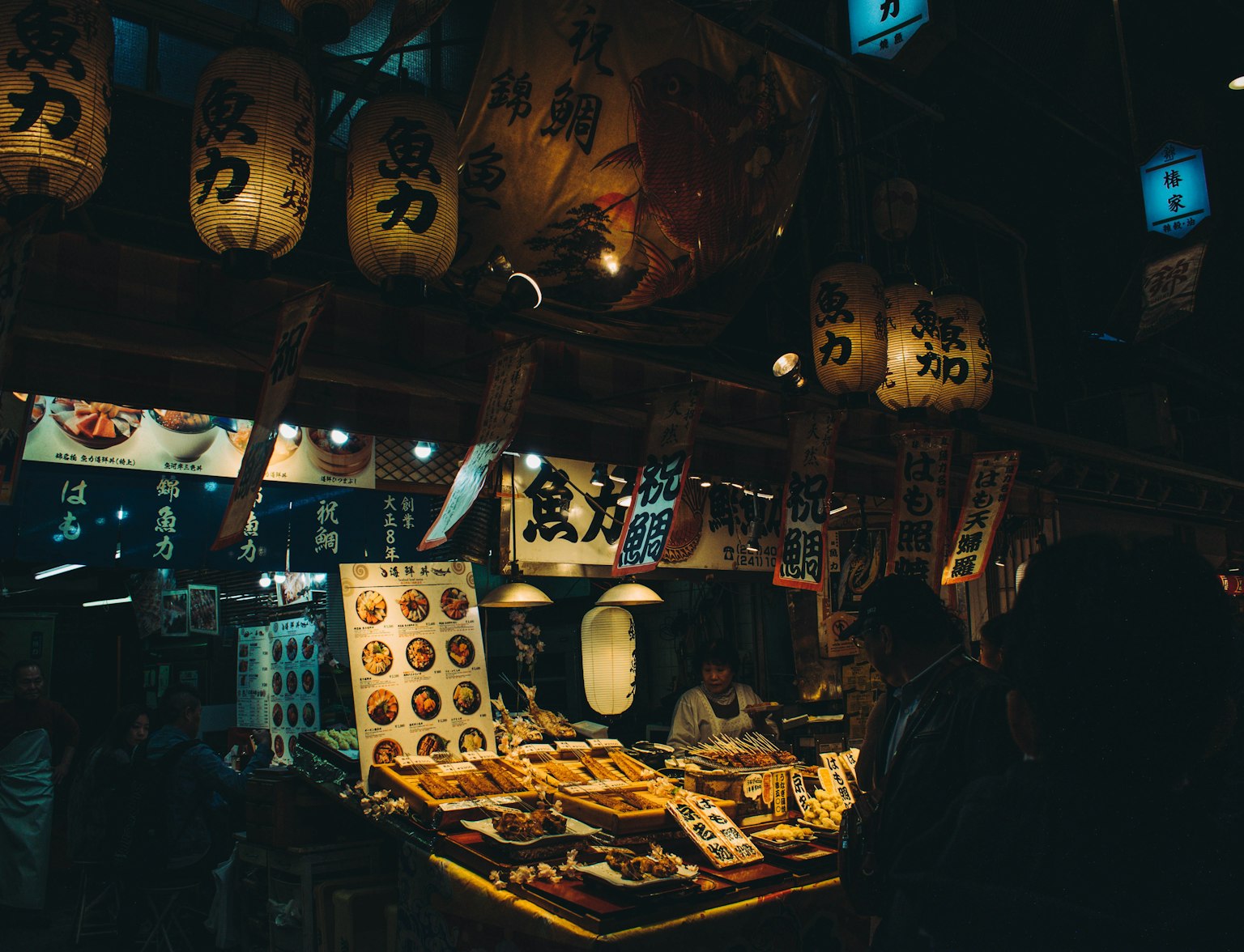
Explore Kyoto's historic Pontocho and Gion Shirakawa areas in an evening food walk.
Shojin Ryori is the traditional cuisine of Buddhist monks in Japan, and it perfectly embodies the Buddhist philosophy of non-violence. It is completely vegetarian and often vegan, abstaining from the use of any animal products. Shojin Ryori is not just food; it's a spiritual practice that emphasizes mindfulness and gratitude for every ingredient used.
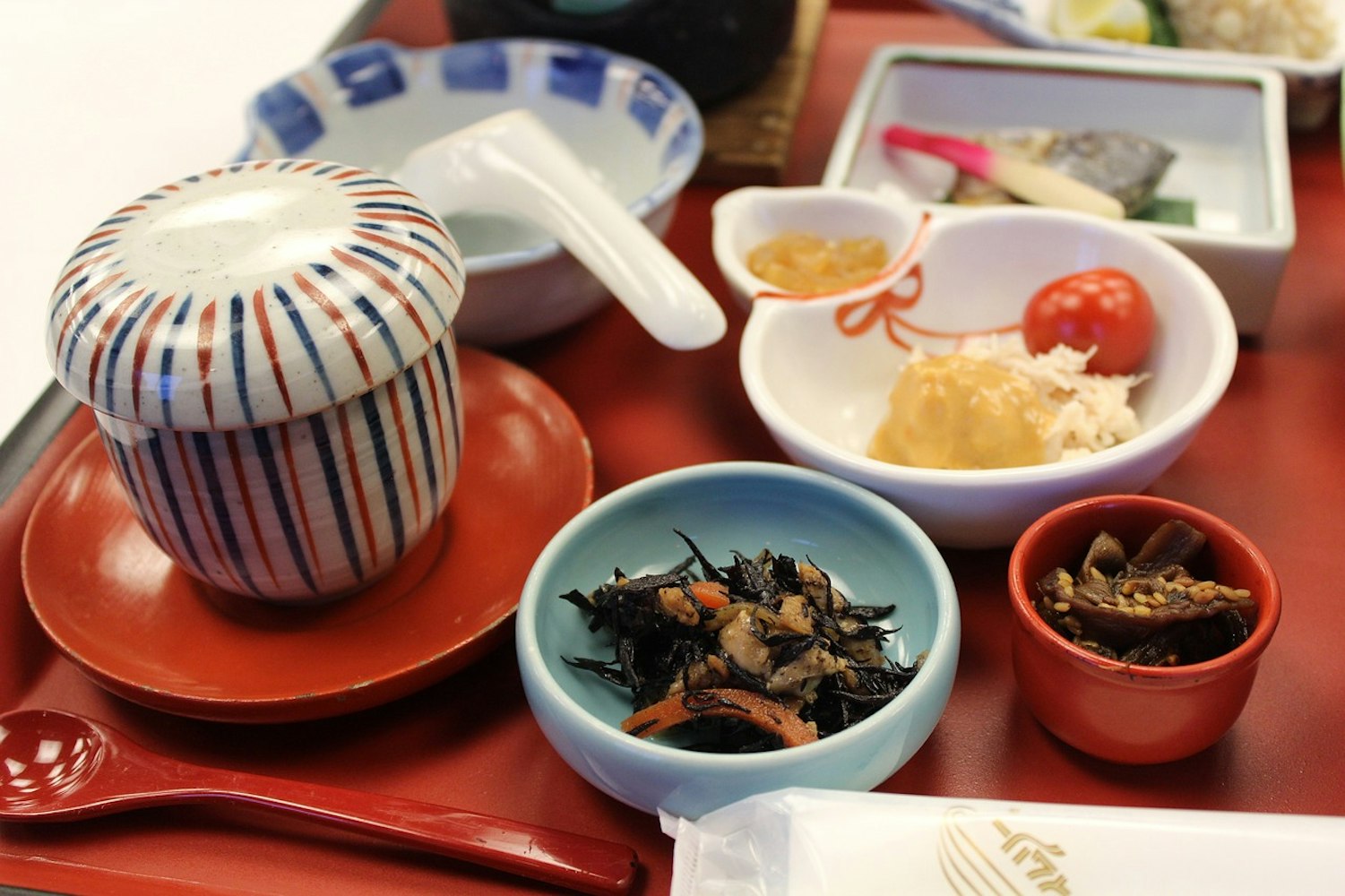
The dishes are prepared using seasonal vegetables, tofu, and grains, with a focus on balance and simplicity. The meals usually include soup, rice, and pickles, along with a variety of other dishes showcasing different cooking methods. Despite the absence of meat and fish, Shojin Ryori is rich in flavors, thanks to the skillful use of umami-rich ingredients like seaweed and mushrooms.
Shigetsu: Located within the grounds of Tenryu-ji Temple, Shigetsu offers a serene environment for enjoying Shojin Ryori. Their meals, served in traditional lacquerware, are as beautiful as they are delicious.
Izusen Daijiin: This restaurant is housed in a temple and offers a multi-course Shojin Ryori experience. Each dish is a work of art, reflecting the changing seasons.
Tosa: Tosa offers a modern take on Shojin Ryori, combining traditional techniques with innovative ideas. The result is an unforgettable dining experience.
Ajiro: Known for their exquisite presentation, Ajiro serves Shojin Ryori meals that are both visually stunning and deeply satisfying.
Obanzai is a traditional style of Japanese cooking that originates from Kyoto. It's the epitome of home-style cooking, featuring simple, hearty dishes made with locally sourced, seasonal ingredients. The term "obanzai" refers to both the cooking style and the dishes themselves, which are typically vegetable-centric and often include tofu and seafood.
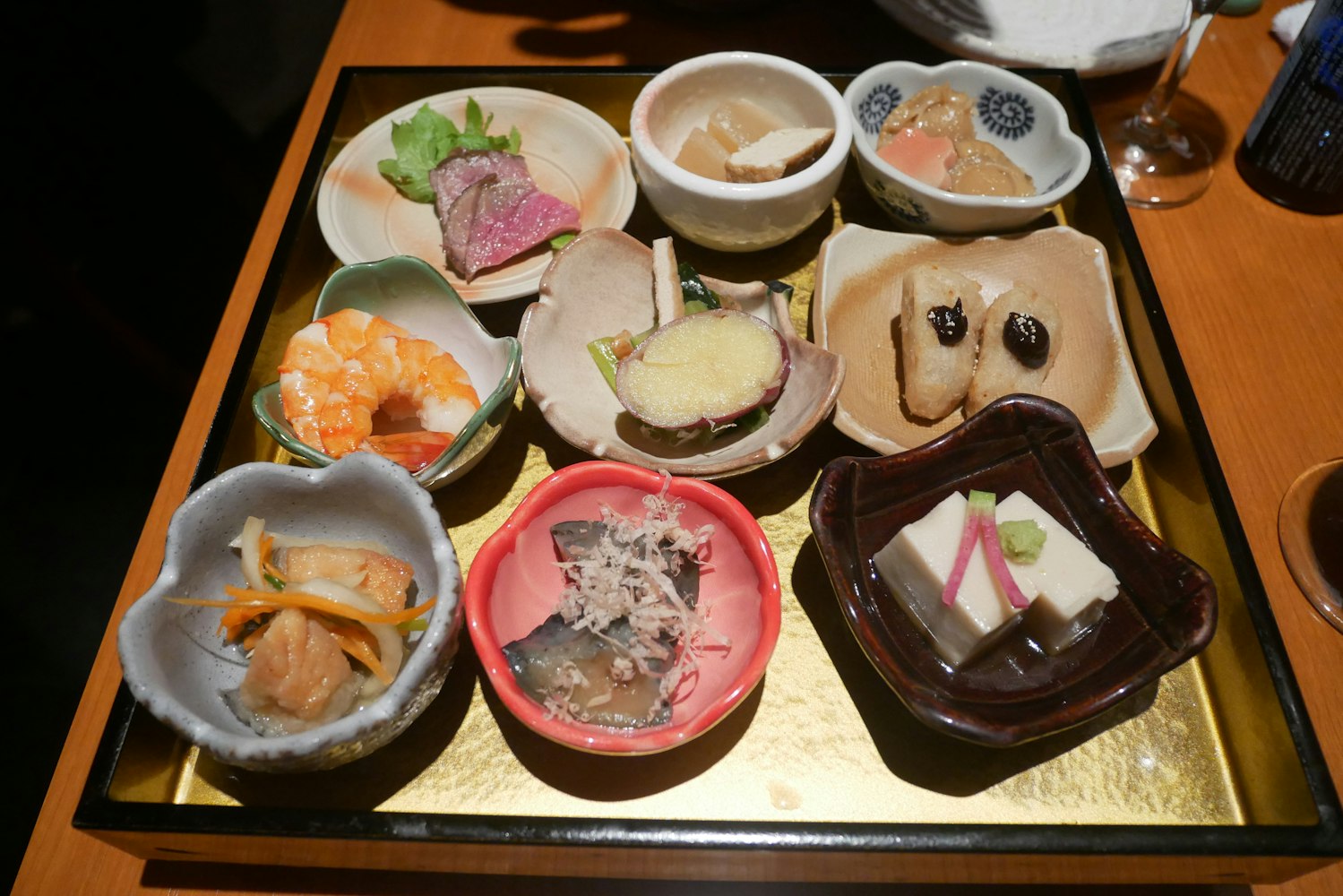
Obanzai is deeply rooted in sustainability. It encourages the use of every part of an ingredient to minimize waste, and the dishes are usually slow-cooked to bring out their natural flavors. While obanzai meals are humble and unpretentious, they're packed with the rich, nuanced flavors that Japanese cuisine is known for.
Obanzai Nana: Located in the heart of Kyoto, this restaurant serves a variety of obanzai dishes made with organic vegetables and locally sourced ingredients.
Yudofu Sagano: While it's best known for its yudofu, this restaurant also offers an excellent selection of obanzai dishes. Their menu changes with the seasons, reflecting the freshest ingredients available.
Okutan Kiyomizu: This historic restaurant serves obanzai meals in a beautiful, traditional setting. It's a great place to experience the warmth and comfort of home-style Japanese cooking.
Emi no Mise: Known for its vegetarian-friendly menu, Emi no Mise offers a range of obanzai dishes that are as nutritious as they are delicious.
Tempura, a popular Japanese dish consisting of seafood or vegetables that have been battered and deep-fried, is a must-try when visiting Kyoto. The city, with its rich culinary history, offers many establishments where you can experience tempura at its finest. Kyoto's tempura is known for its light, crispy batter and the fresh, high-quality ingredients used.

Tempura Endo Yasaka: Located in Gion, this restaurant is renowned for its traditional tempura courses. You can watch as the chef expertly fries each piece to perfection right in front of you.
Yoshikawa Tempura: Housed in a traditional ryokan, Yoshikawa offers an authentic tempura dining experience. Each piece is delicately prepared and served one at a time to ensure optimal temperature and crispness.
Tempura Matsu: This family-run restaurant offers a unique take on tempura, incorporating innovative techniques and ingredients. Their tempura course is a feast for both the eyes and the palate.
Gion Tempura Hohei: Known for its seasonal tempura set menus, Gion Tempura Hohei offers a variety of tempura dishes, each showcasing the flavors of the season.
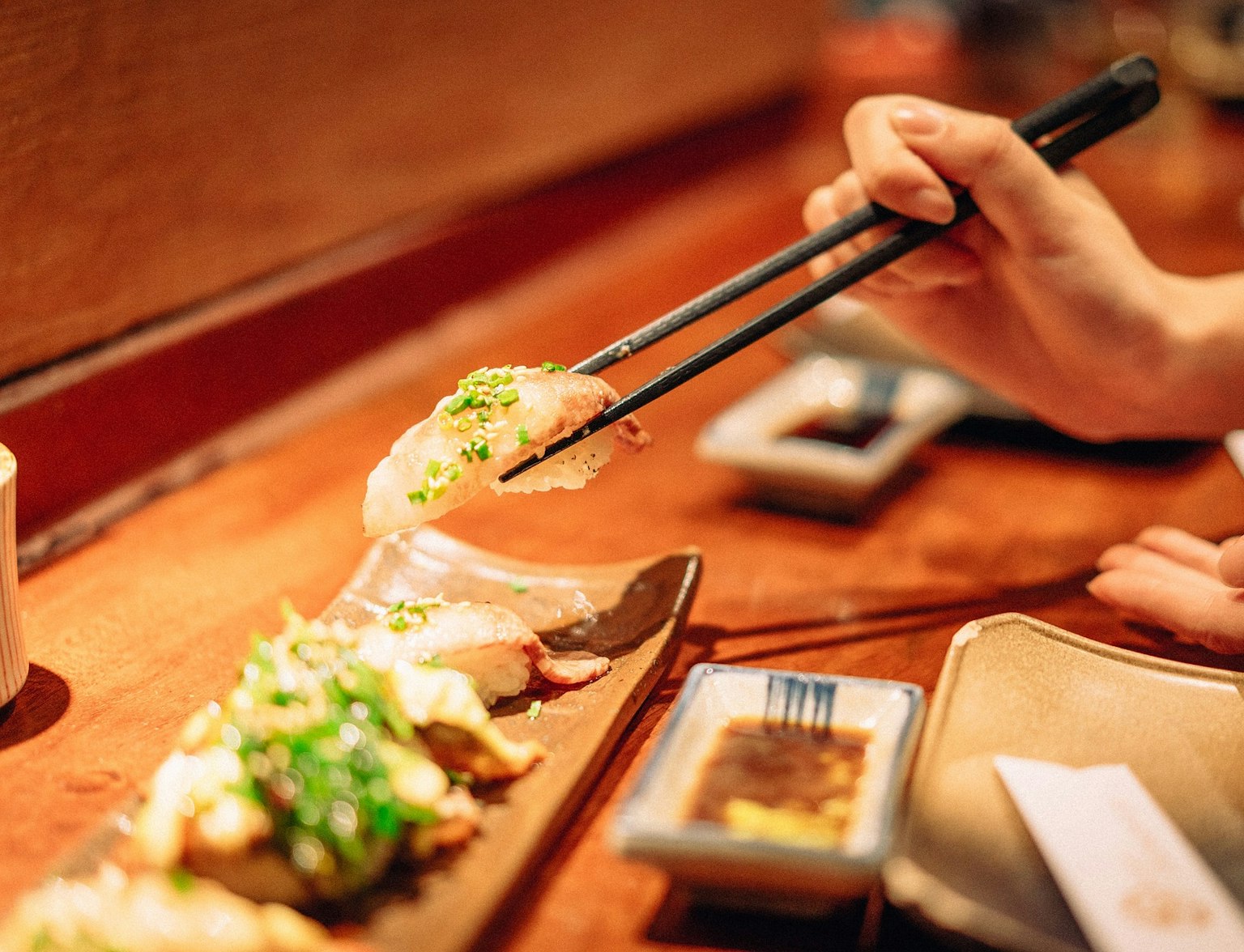
Take advantage of this chance to explore Kyoto's backstreets and indulge in its local delicacies.
As we conclude our gastronomic journey through the heart of Japan, it's evident that Kyoto's culinary scene is an artful blend of tradition and modernity. From the subtlety of Kaiseki cuisine to the comforting warmth of street food Ramen, each dish has offered us a unique taste of Kyoto's cultural heritage.
The exploration of Kyoto's cuisine not only tantalizes the taste buds but also provides a window into the city's rich history and customs. It's a testament to how food can be a powerful medium to connect with a place and its people. So, when you're in Kyoto, let your gastronomic curiosity guide you. Every bite promises a new discovery, every meal, a memorable experience.
What food is Kyoto famous for?
Kyoto is renowned for its diverse and exquisite culinary offerings. Some of the must-try foods include Kyoto-style ramen, tofu, Kushikatsu (skewered meat and vegetables), Chirimen Sansho (small dried sardines with Japanese pepper), Nama-fu (a type of wheat gluten), and Kyoto-Style Sushi. Other local favorites are traditional Kyoto-style course meals (Kyo kaiseki), Soba noodles with dried herring (Nishin soba), and Buddhist vegetarian dishes.
What is the national dish of Kyoto?
The Kaiseki Ryori, a traditional multi-course meal, is considered the epitome of Kyoto's culinary artistry and is often referred to as the city's national dish. It embodies seasonal flavors and employs the freshest local ingredients.
Is food in Kyoto good?
Yes, the food in Kyoto is not only good but also diverse and deeply rooted in the city's history and culture. From the sublime Kaiseki cuisine and tofu dishes to the more homely Obanzai (Kyoto home-cooking), Kyoto offers a gastronomic experience that caters to a variety of palates.
What is the cooking style in Kyoto?
Kyoto's cooking style is a reflection of its cultural heritage and natural bounty. The city is known for its Kaiseki Ryori, a traditional multi-course meal that showcases the chef's skills and creativity. Shojin Ryori, the vegetarian Buddhist cuisine, is another distinctive Kyoto cooking style. Moreover, the city's culinary repertoire also includes Obanzai, a style of home-cooking that emphasizes seasonal and local ingredients.



